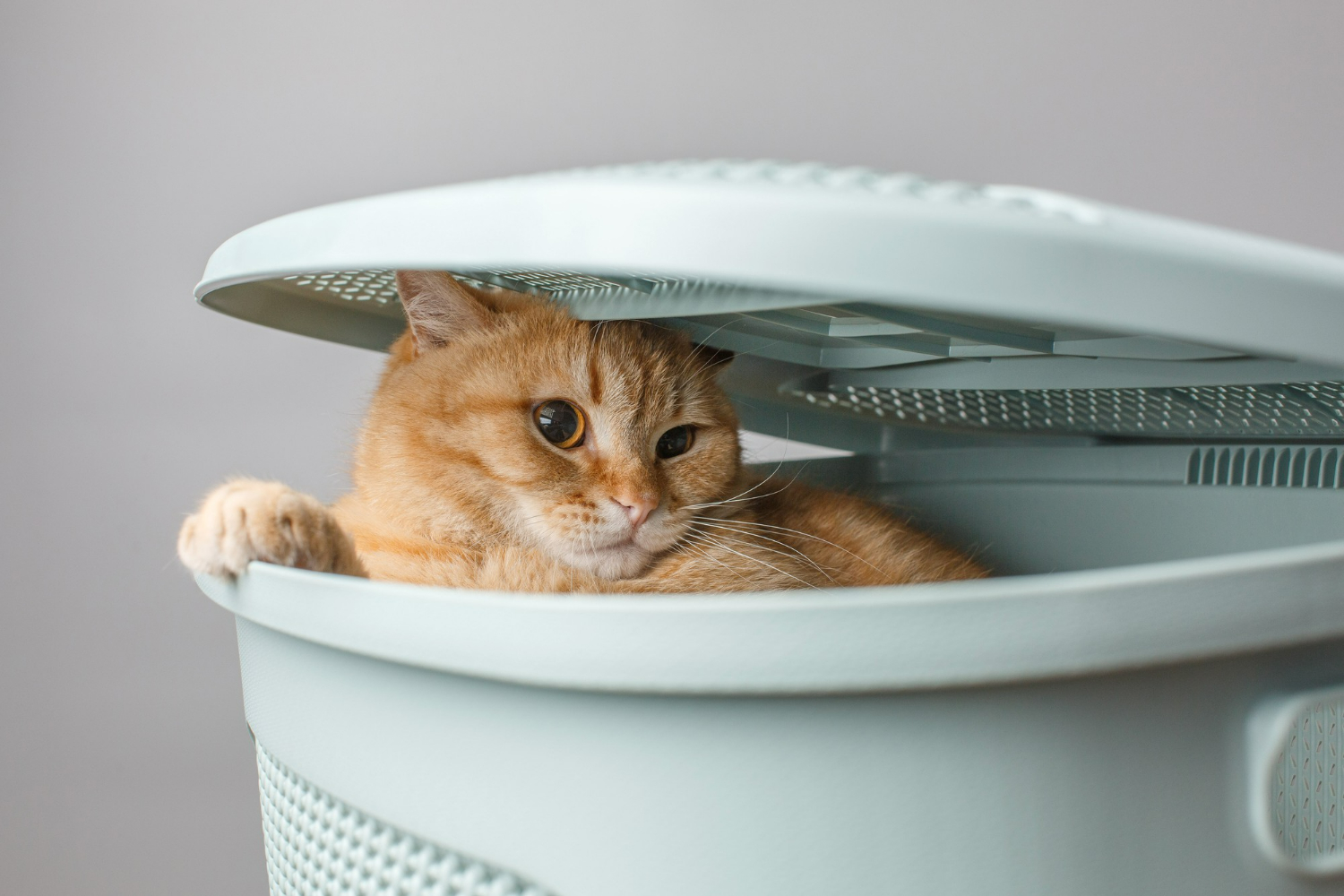Этот сайт использует cookie для хранения данных. Продолжая использовать сайт, Вы даете свое согласие на работу с этими файлами.
How to use a clumping filler

Manufacturers write instructions on their packages and, I think, you have already read it.
Below I will tell you what the instruction is based on and why it should be followed.
1. Height of the litter box with high sides
Cats instinctively hide their tracks and try to cover up or bury their waste. Thus, the animal begins to move its paws in various ways, which can lead to the filler spilling out of the litter box. When choosing a litter box, consider the recommended height of the bulk filler layer of at least 5 cm. The litter box should be at least 8 cm high.
2. Litter box with grid
The owners are already aware that a grid is not necessary, but they're embracing the use of a grid nonetheless! Let's consider the details.
The filler is poured onto the grid. You may be wondering what the mistake is if we pour a layer of 5 cm. The solution is simple: just clear the space between the litter box and the grid. The filler will become higher, which means it will be closer to the edge of the litter box. This means that the risk of additional cleaning of the filler from the floor will increase after a pet leaves the litter box.
You can ask another question. What if you reduce the height of the filler being poured into the litter box by the height of the space between the grid and the bottom of the litter box? The filler layer is thus reduced, and the urine flows through the litter box to the bottom, where it dries. This process propagates the smell throughout the room. Using the litter box this way even for a month will surely make you see why it's important to change it regularly. The bottom will start to smell and you'll have to buy a new litter box.
3. Why it is necessary to stick to a certain filler layer
The manufacturer's recommendation is clear: the filler layer should be at least 5 cm. This is essential for ensuring the pellets form into hard lumps and do not stick to the bottom of the litter box. When the experts of our company faced with the issue of layer thickness, they began to observe the habits of cats, their physiological rate of urine excretion, and came to the conclusion that the bulk layer of the filler in the litter box should be at least 5 cm. This is not because this is the working thickness of the layer. Cats have certain habits and rarely sit on a flat surface of the filler, often creating a recess. This should not reduce the working layer.
In practice, people do not follow the instructions. They pour a 3 cm layer, which does not give the desired effect: forming a lump, locking odor. So, as a result, the waste flows to the bottom of the litter box. This shortens the service life of the litter box and causes inconvenience during cleaning.
4. Removing lumps and adding bentonite
In this case, you will need a scoop and a box for the disposal of lumps.
Lumps need to be cleaned daily at a convenient time for you, but it is better to fill up the filler immediately or make a schedule for this, for example, Tuesday and Friday. This way you will maintain the desired layer.
5. Separately, it is necessary to emphasize the importance of recycling bentonite lumps.
There are certain restrictions in the disposal of bentonite; they relate to disposal into the sewer. Under no circumstances should it be disposed of into the sewer, even if you want to spend an hour washing it off in small portions of 20 grams. It won't save you from blockage. Bentonite has high absorbent and swelling properties.
Conclusions:
1. When completely replacing the litter box or switching to a lumpy bentonite filler, you need to buy at least 8 kg, of which 5 kg will go to create a 5 cm layer (in a standard litter box), and the remaining 3 kg to maintain the desired layer in the litter box.
2. Litter box with high sides
3. No grid
4. Timely maintenance of the required filler layer
5. No disposal into the sewer
6. Follow these five simple steps and you'll have a clean house and a litter box that doesn't need replacing as often.
Below I will tell you what the instruction is based on and why it should be followed.
1. Height of the litter box with high sides
Cats instinctively hide their tracks and try to cover up or bury their waste. Thus, the animal begins to move its paws in various ways, which can lead to the filler spilling out of the litter box. When choosing a litter box, consider the recommended height of the bulk filler layer of at least 5 cm. The litter box should be at least 8 cm high.
2. Litter box with grid
The owners are already aware that a grid is not necessary, but they're embracing the use of a grid nonetheless! Let's consider the details.
The filler is poured onto the grid. You may be wondering what the mistake is if we pour a layer of 5 cm. The solution is simple: just clear the space between the litter box and the grid. The filler will become higher, which means it will be closer to the edge of the litter box. This means that the risk of additional cleaning of the filler from the floor will increase after a pet leaves the litter box.
You can ask another question. What if you reduce the height of the filler being poured into the litter box by the height of the space between the grid and the bottom of the litter box? The filler layer is thus reduced, and the urine flows through the litter box to the bottom, where it dries. This process propagates the smell throughout the room. Using the litter box this way even for a month will surely make you see why it's important to change it regularly. The bottom will start to smell and you'll have to buy a new litter box.
3. Why it is necessary to stick to a certain filler layer
The manufacturer's recommendation is clear: the filler layer should be at least 5 cm. This is essential for ensuring the pellets form into hard lumps and do not stick to the bottom of the litter box. When the experts of our company faced with the issue of layer thickness, they began to observe the habits of cats, their physiological rate of urine excretion, and came to the conclusion that the bulk layer of the filler in the litter box should be at least 5 cm. This is not because this is the working thickness of the layer. Cats have certain habits and rarely sit on a flat surface of the filler, often creating a recess. This should not reduce the working layer.
In practice, people do not follow the instructions. They pour a 3 cm layer, which does not give the desired effect: forming a lump, locking odor. So, as a result, the waste flows to the bottom of the litter box. This shortens the service life of the litter box and causes inconvenience during cleaning.
4. Removing lumps and adding bentonite
In this case, you will need a scoop and a box for the disposal of lumps.
Lumps need to be cleaned daily at a convenient time for you, but it is better to fill up the filler immediately or make a schedule for this, for example, Tuesday and Friday. This way you will maintain the desired layer.
5. Separately, it is necessary to emphasize the importance of recycling bentonite lumps.
There are certain restrictions in the disposal of bentonite; they relate to disposal into the sewer. Under no circumstances should it be disposed of into the sewer, even if you want to spend an hour washing it off in small portions of 20 grams. It won't save you from blockage. Bentonite has high absorbent and swelling properties.
Conclusions:
1. When completely replacing the litter box or switching to a lumpy bentonite filler, you need to buy at least 8 kg, of which 5 kg will go to create a 5 cm layer (in a standard litter box), and the remaining 3 kg to maintain the desired layer in the litter box.
2. Litter box with high sides
3. No grid
4. Timely maintenance of the required filler layer
5. No disposal into the sewer
6. Follow these five simple steps and you'll have a clean house and a litter box that doesn't need replacing as often.
Other instructions
1 / 4





